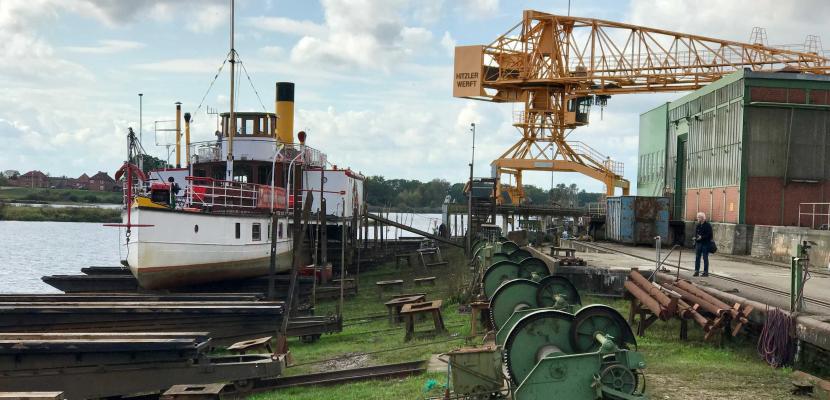Image

Festival of industrial heritage by the water in Hamburg Metropolitan Region
Published on 03 August 2020

Germany
Hamburg
This is the good practice's implementation level. It can be national, regional or local.
About this good practice
Traditionally, the Elbe and its tributaries have provided a strong pull for businesses to locate in the region. The region encompasses an industrial-cultural "water landscape", not to be found anywhere else: One of the world’s largest collection of historical ships, harbours, shipyards, locks, lighthouses and other water technology and much more. In many regions, however, this industrial heritage had become almost forgotten or remained an issue of special interest.
The event helps to valorise the industrial heritage of the region and creates a strong narrative that connects the region. Each time, more than 120 objects take part.
Taking place every other year, the event has helped to make the technical legacy of the region known and accessible. Many objects are opened exclusively for the two-day programme, are being explained and filled with life.
The preservation of the majority of the objects relies heavily on the work and skills of volunteers, often former workers, engineers, sailors. Their valuable knowledge and enthusiasm are the basis of the preservation of the industrial heritage. The festival is an opportunity for them to open their historical object to a wider public and thereby to receive recognition for their work.
The event helped to create a local awareness of the historical importance of many forgotten or overlooked objects. It has helped local initiatives to feel part of a bigger storyline and volunteers to pass on their knowledge to another generation.
The event helps to valorise the industrial heritage of the region and creates a strong narrative that connects the region. Each time, more than 120 objects take part.
Taking place every other year, the event has helped to make the technical legacy of the region known and accessible. Many objects are opened exclusively for the two-day programme, are being explained and filled with life.
The preservation of the majority of the objects relies heavily on the work and skills of volunteers, often former workers, engineers, sailors. Their valuable knowledge and enthusiasm are the basis of the preservation of the industrial heritage. The festival is an opportunity for them to open their historical object to a wider public and thereby to receive recognition for their work.
The event helped to create a local awareness of the historical importance of many forgotten or overlooked objects. It has helped local initiatives to feel part of a bigger storyline and volunteers to pass on their knowledge to another generation.
Resources needed
The festival takes place every other year, so the resources are only needed accordingly.
Staff (project management), 10 hrs/week for 1 year
Project implementation (external services, print, marketing): € 45.000 - € 50.000
Staff (project management), 10 hrs/week for 1 year
Project implementation (external services, print, marketing): € 45.000 - € 50.000
Evidence of success
The event is a good practice for the engagement of communities and locals in the creation of a touristic and cultural product. It has taken place five times so far and can be considered a success for the following reasons:
- High and steady number of participants (> 120 objects)
- High numbers of visitors, even in very rural areas (2017: 18.000)
- High public interest by media
- Event helps residents understand the region through a shared cultural heritage
- High and steady number of participants (> 120 objects)
- High numbers of visitors, even in very rural areas (2017: 18.000)
- High public interest by media
- Event helps residents understand the region through a shared cultural heritage
Potential for learning or transfer
The event is an example of how private and public initiative (locals, communities and voluntary engagement) can be integrated into a meaningful and successful event that connects a whole region and which has a strong storyline.
All this can be organised centrally with a manageable budget and staff deployment. It is a relatively manageable and not too costly way to establish a new attraction along the river.
The organising office a platform for local voluntary initiatives to take part in a joint event with regional and supra-regional publicity. The barriers to participation are deliberately kept low: Every partner can decide how much they can manage to contribute to the festival. The programme editing, overall marketing and public relations work is done centrally.
The main focus in of the event is not the centre of Hamburg with its famous port, but the more rural areas and small towns. The festival helps to draw attention to often very small and little known attractions.
All this can be organised centrally with a manageable budget and staff deployment. It is a relatively manageable and not too costly way to establish a new attraction along the river.
The organising office a platform for local voluntary initiatives to take part in a joint event with regional and supra-regional publicity. The barriers to participation are deliberately kept low: Every partner can decide how much they can manage to contribute to the festival. The programme editing, overall marketing and public relations work is done centrally.
The main focus in of the event is not the centre of Hamburg with its famous port, but the more rural areas and small towns. The festival helps to draw attention to often very small and little known attractions.
Further information
Website
Good practice owner
You can contact the good practice owner below for more detailed information.
Organisation
Hamburg Ministry of Economy, Transportation and Innovation

Germany
Hamburg
Contact
Tourism Officer
